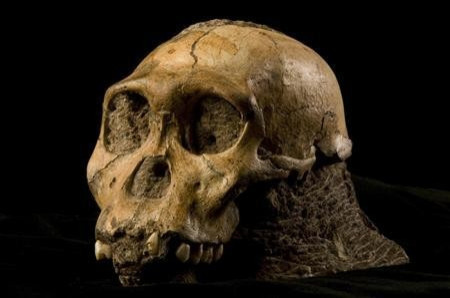New Fossil Analysis May Change Understanding of Human Evolution

New analysis of bones that are nearly 2 million years old suggests they come from a species that may be a leading candidate for an ancient human ancestor, paleontologists say.
Lee Berger of the University of Witwatersrand in Johannesburg, South Africa, who discovered the fossils, says the new species, known as Australopithecus sediba, is the most plausible ancestor of archaic and modern humans.
Many human traits such as long thumbs, upright walking and wide hips have evolved from this vanished species.
Africa is the birthplace of humanity, where Australopithecine precursors to humans and modern apes originated over several million years, as shown by fossils and genetic evidence. The South African fossils are among the best-preserved examples.
Fossils of A. sediba, about 4 feet tall, were discovered in 2008. It was first reported last year from the Malapa site in South Africa, a series of exposed ancient caves.
The brains were less than one-third the size of a modern human's, but features preserved on their inner skull, the team suggests, resemble precursors to specialized brain areas found in modern humans.
They had hands capable of using tools but still strong enough to grasp tree branches. They had a more curved pelvis that would have theoretically accommodated a bigger brain on its way through the birth canal, even though they still had small heads.
The mosaic of features indicates that A. sediba was at an evolutionary transition point between the tree-climbing australopithecines and upright-walking, often tool-using members of the genus Homo, which includes Homo sapiens.
Berger and his colleagues present this claim in five articles in the current issue of Science that describe various aspects of the new fossils.
The fossil remains were discovered in 2008 by Berger, whose then-9-year-old son had accompanied him to a dig site in South Africa. Berger's son had been chasing their dog, Tau, when he stumbled across a rock and immediately saw that it was a fossil.
He took it back to his father, who recognized a collarbone in the block of stone.
The mix of primitive and modern features led Berger and colleagues to suggest that A. sediba could be an ancestor to the genus Homo.
At the same time, the age of the fossils presents a problem. The researchers' isotopic and magnetic dating showed the fossils were 1.977 million years old, about 300,000 years younger than a Homo habilis fossil that should have been their junior.
© Copyright IBTimes 2024. All rights reserved.





















